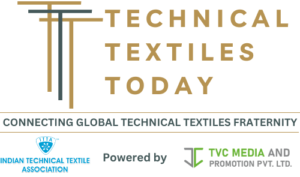Applications of Industrial Textiles
Industrial Textiles are classified based on a challenging process, processed raw materials, production system and production strategy. However, researchers have classified industrial textiles based on their final application. Here are some common applications:
1. Printed Circuit Board
Printed circuit board is an essential part of modern technology. Today, based on almost all modern electronic printed circuit boards, provide electrical and mechanical connections for components of different systems. The use of this small portion of plastic and glass fibers is one of the reasons for the growth of the electronic industry.
2. Fabric Circuit Board
Qiao Li and Xiao Ming Tao, two researchers from Hong Kong Polytechnic University, created the ‘Fabric Circuit Board’ using “Computerized Knitting Technology” in a combination of conductive fibrous metal materials and ancient fabrics. The process finished fabric circuit board holds 3D circuits that are bending, stretching and washing resistant.
3. Sound Proofing Parts
Nonwoven Textile materials are widely used for sound insulation and sound absorptions applications due to their porous structure in recent times. These materials are used as sound absorbers, sound diffusers, noise barriers and sound reflectors. For the sound transmission through friction, the sound waves should penetrate into the absorbent material. The loss of sound energy in textile materials is influenced by numerous physical problems like types of fiber, fiber diameter, material thickness & density, bonding techniques, air resistance and porosity.
4. Computer Printer Ribbon
The computer printer cartridge of a dot matrix printer (DMP) is known as “computer printer ribbon”, which is made of a cassette and ink fabric. The cartridges are replaced just when no more prints can be taken, but only the part of the ribbon known as the refill is changed to save extra cost. Oven (woven) fabric is made using nylon-6 yarn which is cut to the size required for making computer printer ribbon. The required properties for this fabric are high tensile strength, good absorption capacity, capillary action, shock resistant, scratch resistant, good heat resistant etc. These features enable the ribbon to carry ink and withstand pressure during printing.
5. Synthetic Bristle Brush
Synthetic bristle brushes are usually made of nylon or polyester or a combination of both. The qualities of the brush (firmness, durability, etc.) vary depending on the filaments used. Synthetic bristle brushes are used for oil or water-based painting. For example: Nyangle, Lehigh, Pylon, Eureka, Logan, Pinnacle etc.
6. Organic Fiber Brush
Most of the organic fiber brushes are made of horse hair and other organic fibers. The bristles of these brushes are usually natural and soft. These brushes are used for cleaning sensitive areas where metal brushes are not suitable. The two main advantages of these brushes are that they have a lot of elasticity and durability and it works harmoniously.
7. Abrasive Brush
Abrasive or corrosive brushes are widely used for rust cleaning, smoothing of metals, polishing, smoothing, light corrosion, removal of oxides and wood panels. These types of brushes are made of abrasive grit, which is covered with nylon filaments. These come in different sizes. There are mainly two types of abrasive brushes, namely power abrasive brush and cylinder abrasive brush. Both are covered with nylon filaments and provide great flexibility.
8. Industrial Brush
Industrial brushes are used for finishing various surfaces, industrial sector and household and a few other sectors to smooth and clean the surface of something. It is widely used to paint buildings and other constructions. This industrial brush is also used for yarn brushing, textile finishing, capsule finishing, bottle cleaning and cleaning of driving belts.
9. Conveyor Belt
Conveyor belt system is the modern, efficient and best way to transport goods. These are designed in such a way that they can easily move all weights and loads of different sizes from one place to another. This type of belt is risk free and can be easily installed anywhere.
10. Belt-Drive
A belt drive is a type of frictional drive that is a flexible component of a mechanical system. It transfers energy from one shaft of the machine to another. This energy or speed is caused by the friction between the belt drive and the machine pulley. The use of V-belts from flat and equal belts is increasing, as its efficiency is higher than that of flat belts and can transmit maximum amount of power. These are made of vinyl, poly-vinyl etc.
11. Belt-in-Seat
The seat belt is a three-point harness attached to a shoulder belt and to the seat instead of the car structure. The first car to use this system was the “Range Rover Classic”. It has been used in the first seat of the car with standard fitness since 1980. This system was used for front seats in some cars, such as the “Renault Vel Satis”.
12. Fire Hose Flexible Pipe
Hose-pipes from textile materials that may stand up to an exact pressure. The raw materials contain cotton, ramie, flax and manmade fiber in these goods. This can be appropriate for high-pressure delivery while not leaking. The features of hosepipes are good resistance of abrasion, preservative and light in weight.
13. Decatising Fabric
Decatising fabric is additionally referred to as decatising wrapper. It is an industrial fabric that is employed in decatising machines. The textile materials are an integral part of each open decatising and kier decatising machines that are widely used for mechanical finishing of woven fabrics. Decatising fabric could be a polyamide/cotton or polyester/cotton blended woven fabrics.
There are also several other products like Abrasive Belt, Seals & Gaskets, Fuel cell, Roller covers, Grinding technology, Insulations, Plasma screens, Wet & Dry filtration etc., all of which are included in the industrial textiles. Fabrics with different types and specific properties like open-weave fabric, tubular fabric, felt fabric etc. are used in making industrial goods. There are many more fields where the use of textile materials.
